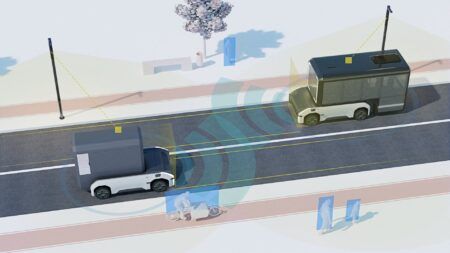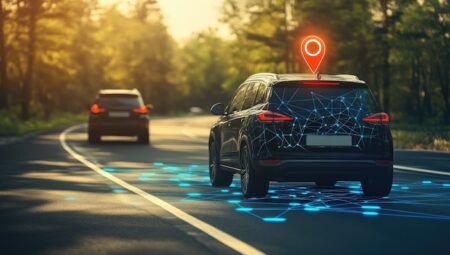There are a whole host of possible benefits that may be brought about by self driving vehicles including a reduction in crashes, less congestion, and more free-time for travellers. However, it’s important to be aware that there are a lot of misconceptions surrounding this tech. Before we arrive at an automated vehicle (AV) utopia – if, indeed we ever do – it’s important to be mindful of common myths surrounding this technology as it exists today.

MYTH 1: Self-driving cars require no human interaction
Drivers of today’s semi-automated vehicles would like to believe that this is the case. However, it’s just not true as many drivers have learned the hard way. For instance, a driver was watching a movie with a self driving Tesla car when it crashed into a wall. Tesla explicitly states that you should always be paying attention to the road and keep both hands on the wheel. They don’t even advertise their tech as self driving because it isn’t really that type of tech. There are different levels of self driving technology. We’re still stuck at levels 2 and 3. For no human input at all, these cars would have to be available at level 5.

MYTH 2: AVs will mean an end to driving tests
It’s possible that if the technology becomes advanced enough where drivers no longer need their hands on the wheel, then you could potentially ‘drive’ a driverless car without a driving licence. However, we are a long way from this becoming an option. Driving instructor courses do not account for this technology nor should they. We are least 10 years from cars being able to drive themselves without any form of human interaction. Laws and regulations to allow drivers to man these cars without the proper license could be several more decades away from coming to fruition.

MYTH 3: AVs will eliminate crashes completely
Don’t count on it, this is essentially a piece of tech similar to a computer or a phone. Think about how often in a year your phone fails, glitches or crashes. Technology, even advanced technology is infallible and there’s no reason to think that autonomous cars will somehow break this mould. Producers will aim to make this tech as safe as possible, however, there could never be an absolute guarantee of safety.
MYTH 4: AVs won’t require insurance
Insurance will still be needed on the road for these vehicles. The reason for this is because, as already explained, accidents won’t vanish. However, the fault for accidents certainly could. So, potentially, if you were involved in an accident with a true driverless vehicle, then you wouldn’t be held accountable even if it was your car that caused the crash, instead it will be the fault of the vehicle manufacturer. However, the manufacturer will therefore need insurance, and this won’t be the case until autonomous cars reach level 5.






